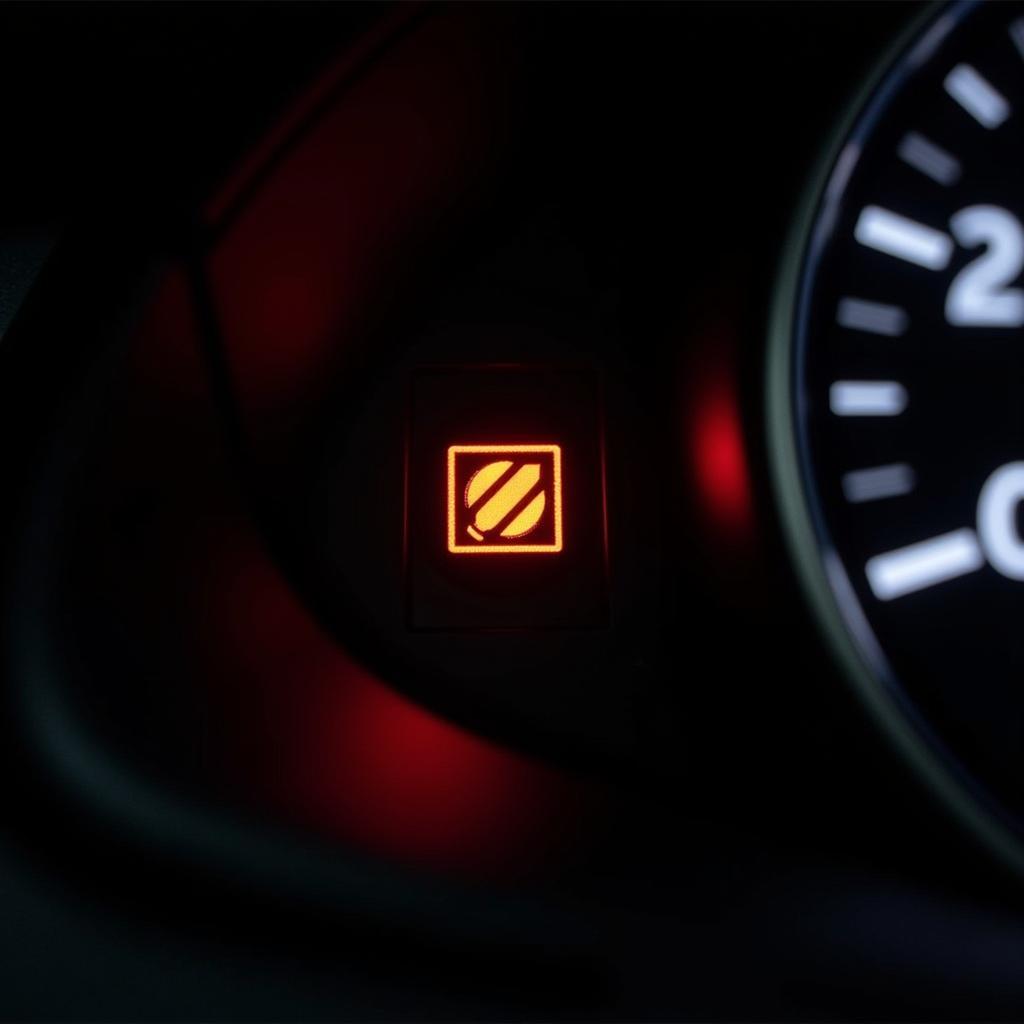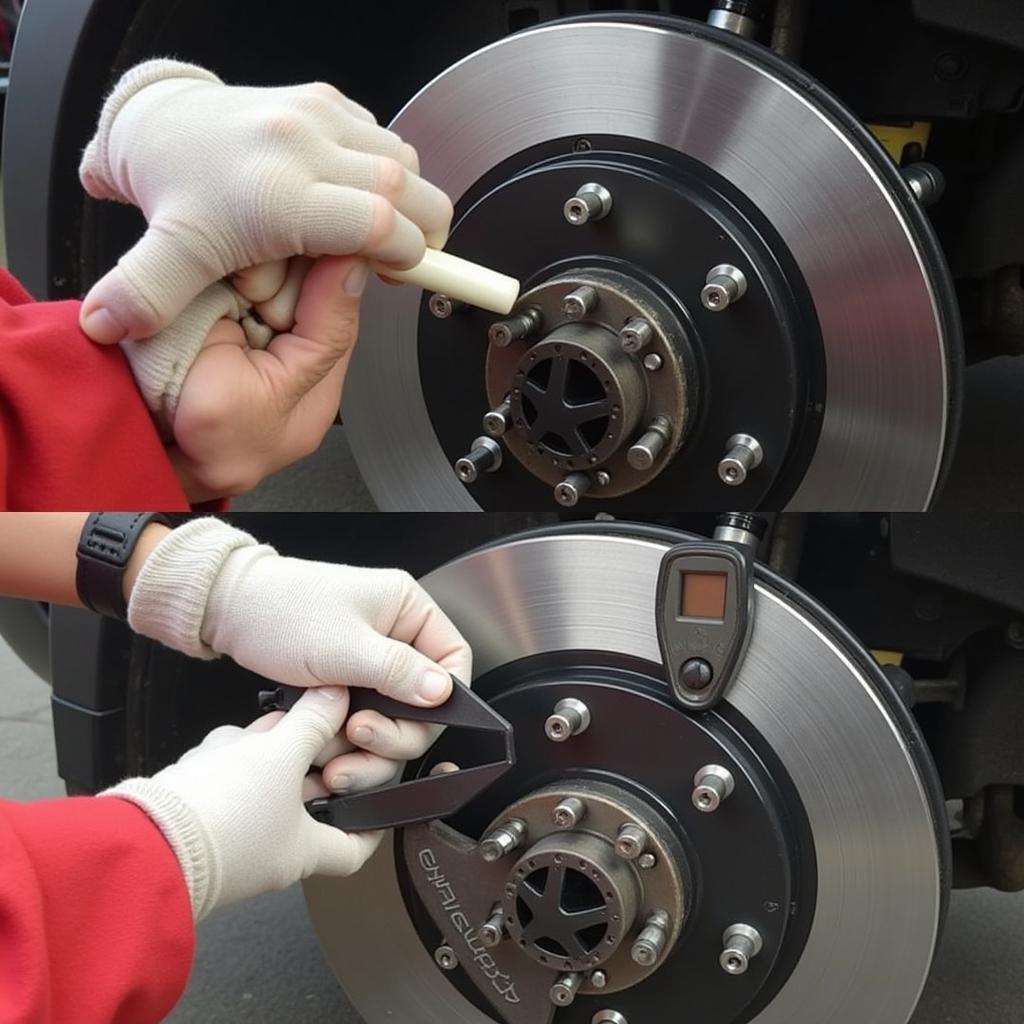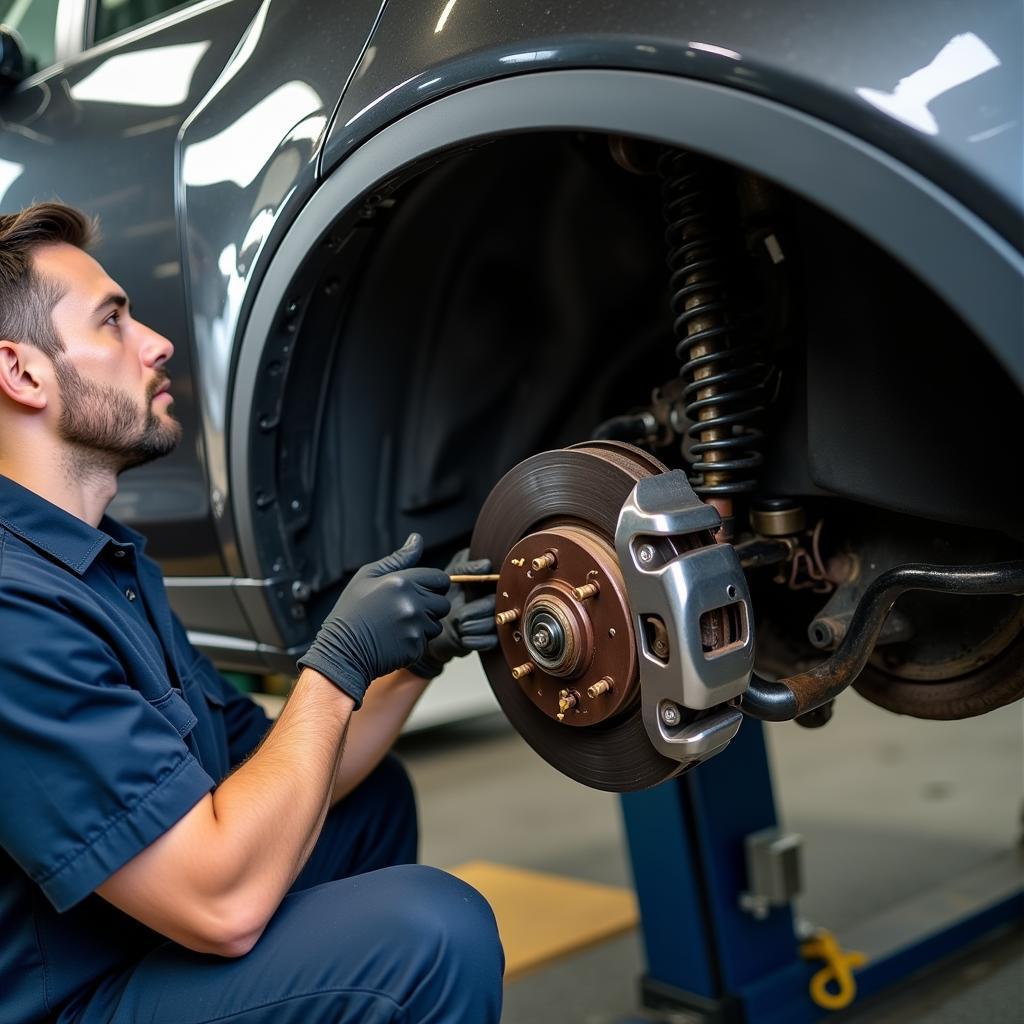The dreaded brake pad warning light on your Land Rover Discovery has illuminated, and you might be wondering what to do next. Don’t panic, this is a common issue and often easily addressed. This comprehensive guide will walk you through understanding the warning, potential causes, and possible solutions.
Understanding Your Land Rover Discovery Brake Pad Warning Light
Your Land Rover Discovery is equipped with a sophisticated sensor system designed to alert you to potential issues before they become major problems. The brake pad warning light is a key part of this system, specifically focusing on the condition of your brakes.
When the brake pad warning light illuminates, it signifies that the brake pad wear sensors, small metal tabs embedded within the brake pads, have made contact with the brake rotor. This contact triggers the warning light on your dashboard.
 Land Rover Discovery brake pad warning light on dashboard
Land Rover Discovery brake pad warning light on dashboard
Common Causes of a Land Rover Discovery Brake Pad Warning Light
While worn brake pads are the most common reason for the warning light, several other factors can contribute to this issue:
- Worn Brake Pads: As mentioned, this is the most frequent culprit. Over time, brake pads naturally wear down due to friction generated during braking.
- Damaged Brake Pad Sensor: The sensor itself could be faulty, damaged, or improperly installed, leading to a false warning.
- Low Brake Fluid Level: Insufficient brake fluid can trigger the warning light. This could indicate a leak in your brake lines, which needs immediate attention.
- Electrical Issues: In some cases, a short circuit or wiring problem within the brake pad sensor system can trigger the warning light.
Troubleshooting Your Land Rover Discovery Brake Pad Warning Light
Before heading to the mechanic, here are a few checks you can do yourself:
- Check Your Brake Pad Thickness: Visually inspect your brake pads through the wheel spokes. If the pad material is less than ¼ inch thick, it’s time for a replacement.
 Checking the thickness of brake pads on a Land Rover Discovery
Checking the thickness of brake pads on a Land Rover Discovery
-
Inspect Brake Pad Sensors: Carefully examine the brake pad wear sensors for any signs of damage, such as cuts or fraying. If you notice any issues, the sensors may need replacement.
-
Check Brake Fluid Level: Locate the brake fluid reservoir under the hood and check the fluid level. If it’s low, add the recommended brake fluid type for your Land Rover Discovery. However, if you notice a consistent need to top up the fluid, it’s a strong indication of a leak that needs immediate professional attention.
When to Seek Professional Help for Your Land Rover Discovery Brake Pad Warning
If your initial inspection doesn’t reveal an obvious solution, or you’re uncomfortable working on your vehicle’s braking system, it’s crucial to seek professional help. Land Rover Discovery 3 brake pad warning light issues, like any brake-related concern, should be addressed promptly to ensure your safety and the optimal performance of your vehicle.
Here are situations where professional assistance is recommended:
- You see signs of brake fluid leakage.
- You hear unusual noises when braking, such as grinding or squealing.
- Your brake pedal feels spongy or goes closer to the floor than usual.
- You are unsure about checking or replacing brake components yourself.
Importance of Regular Brake Maintenance for Your Land Rover Discovery
Timely brake maintenance is essential for your safety and the longevity of your Land Rover Discovery.
“Regular brake inspections can prevent costly repairs down the line and keep your Land Rover Discovery performing at its best,” says Master Technician, James O’Connell.
Here are some key maintenance tips:
- Adhere to the recommended brake inspection schedule in your owner’s manual.
- Have your brake fluid flushed and replaced every 2 years or as recommended by your manufacturer.
- Don’t ignore unusual noises or changes in brake pedal feel.
 Professional inspecting the brake system of a Land Rover Discovery
Professional inspecting the brake system of a Land Rover Discovery
Conclusion
Ignoring a brake pad warning light on your Land Rover Discovery can lead to serious safety hazards and more costly repairs. Understanding the warning signs and addressing them promptly will ensure optimal braking performance and, most importantly, keep you safe on the road. When in doubt, always consult a qualified mechanic specializing in Land Rover vehicles.
FAQ
Q: Can I drive my Land Rover Discovery with the brake pad warning light on?
A: It is highly discouraged. Driving with worn brake pads compromises your braking distance and increases the risk of accidents.
Q: How long do Land Rover Discovery brake pads last?
A: Brake pad lifespan varies widely depending on driving style, conditions, and brake pad quality. However, it’s recommended to have them checked at least every 12,000 miles.
Q: How much does it cost to replace Land Rover Discovery brake pads?
A: Costs vary depending on the model year, labor rates, and if you choose OEM or aftermarket parts.
Q: Can I replace my Land Rover Discovery brake pads myself?
A: Replacing brake pads requires mechanical knowledge. If you’re comfortable with car maintenance, you can find resources online. However, for safety, consider professional service.
Q: What happens if I completely wear down my Land Rover Discovery brake pads?
A: Driving with completely worn pads can damage the rotors, leading to costly repairs and significantly compromised braking ability, making it extremely dangerous to drive.

